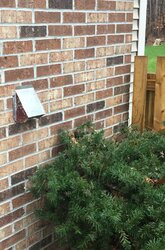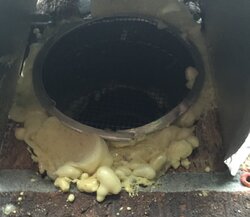womaus
Feeling the Heat
I don't need an OAK because I'm sure all my cold air is being drawn from the basement very close to floor level. Has anyone ever have an IAK (indoor air kit) where they are pulling from a lower level. I think it would work the same way.
OK...I'll hop in with a serious post, what I've learned from HVAC people, other info.
Make up air is not only a factor with pellet stoves. Anything that is using any type of combustion, or pulling air for it's use (i.e. an electric clothes dryer) is consuming air contained within the house proper. This includes basements, attics, attached garages, etc.
This can cause problems no matter how loose or tight the house is.
If the house is tight, minimal leakage from the outside, using interior air for one device could affect the performance of the other devices, starving those machines of the air they need.
If the house is loose, using interior air will pull outside air into the house. In Central MA, dead of winter, it could mean replacing quite a bit of heated 65 degree interior air with 10 degree outside air. I've got a Harman Accentra FS, I'd like to see what the CFM rating is on the combustion fan, compare that to room size, etc. Lets go on the low end: A 10 CFM fan (and I'm betting this is on the low side, but I do not know) vented to the outside will replace all of the air in a 15' X 15' X 8' every 3 hours. Seems like quite a waste of air we pay to get to temperature.
Installing an OAK will provide the stove with the needed resources for proper combustion of the pellets without either (1) possibly starving the other appliances or (2) wasting already heated interior air, quickly moving it to the outside.
Not having proper combustion air increases costs of pellet stove use (we've seen the posts on trying to fine tune the burns, trim the air, so that pellets are not wasted, or to get maximum heat from each bag), also decreases the efficiency of gas water heaters, gas and oil furnaces, etc. These effects are not readily seen...the utility bills may go up a bit, it may take a bit longer to reach room temp, oil burners may need more frequent cleaning.
What is noticed easily is the cold draft wafting through the house. Getting an OAK in place takes care of that appliance itself, decreasing the need for the outside air to come in to service the needs of that appliance. Adding an OAK to one device could add to the efficiency of other appliances in the household. Adding an OAK immediately increases the comfort potential of that device.
I'm still amazed that most of the stove dealers and installers will try to talk you out of it...I can certainly see it would add to the time and expense (minimal) of the installation, but the benefits of an OAK far outweigh the problems of getting it in place.
At least I think that's what they told me. Put me to sleep too.....






 When we first installed our stove, it was without an OAK. Reading the discussions here, I installed one about 2 weeks later. Glad I did!
When we first installed our stove, it was without an OAK. Reading the discussions here, I installed one about 2 weeks later. Glad I did!